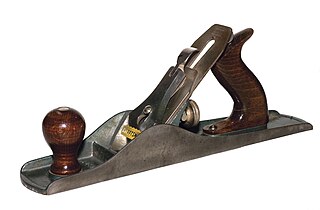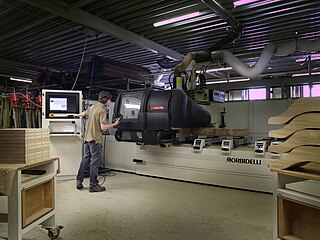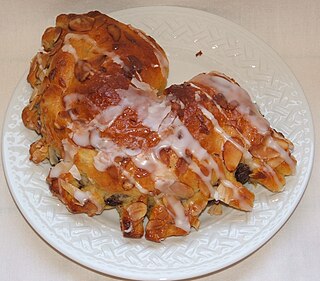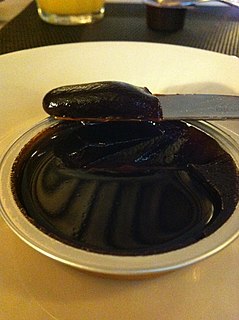
Hydraulic rescue tools, also known as jaws of life, are used by emergency rescue personnel to assist in the extrication of victims involved in vehicle accidents, as well as other rescues in small spaces. These tools include cutters, spreaders, and rams. Such devices were first used in 1963 as a tool to free race car drivers from their vehicles after crashes.

A peeler is a kitchen tool, a distinct type of kitchen knife, consisting of a metal blade with a slot with a sharp edge attached to a handle, used to remove the outer layer of some vegetables such as potatoes, broccoli stalks, and carrots, and fruits such as apples and pears. A paring knife may also be used to peel vegetables. The blade of a peeler has a slot with one side sharpened; the other side of the slot prevents the blade from cutting too far into the vegetable.

Drills are cutting tools used to remove material to create holes, almost always of circular cross-section. Drills come in many sizes and shapes and can create different kinds of holes in many different materials. In order to create holes drill bits are usually attached to a drill, which powers them to cut through the workpiece, typically by rotation. The drill will grasp the upper end of a bit called the shank in the chuck.

A hand plane is a tool for shaping wood using muscle power to force the cutting blade over the wood surface. Some rotary power planers are motorized power tools used for the same types of larger tasks, but are unsuitable for fine-scale planing, where a miniature hand plane is used.

A pencil sharpener is a tool for sharpening a pencil's writing point by shaving away its worn surface. Pencil sharpeners may be operated manually or by an electric motor. It is common for many sharpeners to have a casing around them, which can be removed for emptying the pencil shavings debris into a bin.

Pliers are a hand tool used to hold objects firmly, possibly developed from tongs used to handle hot metal in Bronze Age Europe. They are also useful for bending and physically compressing a wide range of materials. Generally, pliers consist of a pair of metal first-class levers joined at a fulcrum positioned closer to one end of the levers, creating short jaws on one side of the fulcrum, and longer handles on the other side. This arrangement creates a mechanical advantage, allowing the force of the grip strength to be amplified and focused on an object with precision. The jaws can also be used to manipulate objects too small or unwieldy to be manipulated with the fingers.

Numerical control is the automated control of machining tools by means of a computer. A CNC machine processes a piece of material to meet specifications by following coded programmed instructions and without a manual operator directly controlling the machining operation.

A pie chart is a circular statistical graphic, which is divided into slices to illustrate numerical proportion. In a pie chart, the arc length of each slice is proportional to the quantity it represents. While it is named for its resemblance to a pie which has been sliced, there are variations on the way it can be presented. The earliest known pie chart is generally credited to William Playfair's Statistical Breviary of 1801.

A kitchen knife is any knife that is intended to be used in food preparation. While much of this work can be accomplished with a few general-purpose knives – notably a large chef's knife, a tough cleaver, a small paring knife and some sort of serrated blade – there are also many specialized knives that are designed for specific tasks. Kitchen knives can be made from several different materials.

A bear claw is a sweet, yeast-raised pastry, a type of Danish, originating in the United States during the mid-1910's. In Denmark, a bear claw is referred to as kamme. France also have an alternate version of that pastry : patte d'ours, created in 1982 in the Alps. The name bear claw as used for a pastry is first attested in March 1914 by the Geibel German Bakery, located at 915 K Street in downtown Sacramento. The phrase is more common in Western American English, and is included in the U.S. Regional Dialect Survey Results, Question #87, "Do you use the term 'bear claw' for a kind of pastry?"

A modern core drill is a drill specifically designed to remove a cylinder of material, much like a hole saw. The material left inside the drill bit is referred to as the core.

A comparison of apples and oranges occurs when two items or groups of items are compared that cannot be practically compared, typically because of inherent, fundamental and/or qualitative differences between the items.

Gastrique is caramelized sugar, deglazed with vinegar or other sour liquids, used as a sweet and sour flavoring for sauces.

Whipped cream is liquid heavy cream that is whipped by a whisk or mixer until it is light and fluffy and holds its shape, or by the expansion of dissolved gas, forming a firm colloid. It is often sweetened, typically with white sugar, and sometimes flavored with vanilla. Whipped cream is also called Chantilly cream.

A baked apple is a dish consisting of an apple baked in an oven until it has become soft. The core is usually removed and the resulting cavity stuffed with sweet or savory fillings and seasonings. Pears and quinces may be prepared in the same way.

Grafting or graftage is a horticultural technique whereby tissues of plants are joined so as to continue their growth together. The upper part of the combined plant is called the scion while the lower part is called the rootstock. The success of this joining requires that the vascular tissues grow together and such joining is called inosculation. The technique is most commonly used in asexual propagation of commercially grown plants for the horticultural and agricultural trades.

A cheese knife is a type of kitchen knife specialized for the cutting of cheese. Different cheeses require different knives, according primarily to hardness. There are also a number of other kitchen tools designed for cutting or slicing cheese, especially the harder types. These include the cheese cutter, cheese slicer, cheese plane and others.

A pineapple cutter is a hand-held cylindrical kitchen utensil with a circular blade at the end designed for cutting pineapples. A knife is required to open the top of the pineapple before using the pineapple cutter. The cutter will cut the flesh of the pineapple into a spiral and also removes the core. Different sizes are available so as not to cut into the skin of the pineapple or cause too much to be wasted.

Sirop de Liège is a Belgian jam or jelly-like spread. Apple and pear are principally used, often with dates: other fruit such as apricot can be used as well. Sugar and other sweeteners are not normally needed.

Ice drilling allows scientists studying glaciers and ice sheets to gain access to what is beneath the ice, to take measurements along the interior of the ice, and to retrieve samples. Instruments can be placed in the drilled holes to record temperature, pressure, speed, direction of movement, and for other scientific research, such as neutrino detection.






















